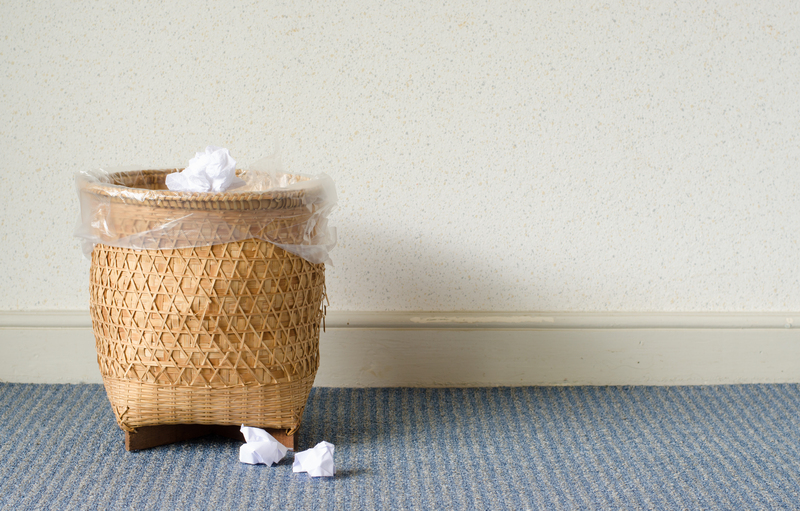Save More with DIY Approaches to Bulky Waste Removal
Are you tired of seeing those old furniture pieces, broken appliances, or piles of garden debris taking up space at home? Bulky waste removal can be expensive if you rely on professional services every time. Luckily, there are plenty of ways to save more with DIY bulky waste removal methods. With a bit of creativity and planning, you can handle unwanted items safely and affordably, while also benefiting the environment.

Understanding Bulky Waste and Its Challenges
Bulky waste--also known as large or oversized waste--refers to items that are too big to fit in your regular trash bin. These can include:
- Furniture (sofas, beds, wardrobes, tables, chairs)
- Large appliances (refrigerators, washing machines, ovens)
- Mattresses and box springs
- Old carpets and flooring
- Garden waste (branches, felled trees, old fencing)
- Construction materials (doors, windows, sinks, toilets)
While disposing of bulky waste can seem straightforward, it often presents unique challenges:
- High disposal fees from local councils or waste management companies
- Strict collection schedules and restrictions on items
- Environmental hazards if dumped illegally
That's why DIY removal and innovative approaches can help you save money on bulky waste disposal while reducing your carbon footprint.
Why Choose DIY Approaches for Bulky Waste Disposal?
There are several compelling reasons to opt for DIY methods when clearing out large waste:
- Cost Efficiency: Avoid the high fees of professional removal by doing it yourself.
- Environmental Responsibility: Many DIY options emphasize recycling, upcycling, and donation, keeping usable items out of landfills.
- Convenience: You decide when and how to dispose of items, without waiting for scheduled collections.
- Personal Satisfaction: It's rewarding to see clutter vanish thanks to your own efforts.
Step-by-Step Guide to DIY Bulky Waste Removal
1. Assess and Sort Your Items
Begin by identifying everything you want to remove. Bulky items often have more value than you think, either for you or others! Sort your belongings into these categories:
- Donatable (still usable and appealing to someone else)
- Sellable (could fetch a price online or at a yard sale)
- Recyclable (made mainly of metal, wood, or plastics that can be recycled)
- Landfill-bound (broken beyond repair, unsafe, or unrecyclable)
2. Explore Local Donation Centers and Charities
Many non-profits want your gently-used furniture, home goods, or even certain appliances. Donating is a great way to help your community while saving on bulky waste removal costs.
- Contact local goodwill centers or shelter organizations for their requirements and item pickup policies.
- Avoid dumping or leaving items outside of charity shops without permission.
- Some charities offer free collection services for bulky items, particularly large furniture.
3. Sell or Gift Unwanted Items Online
With so many online platforms, selling or giving away large items is easier than ever. Consider:
- Facebook Marketplace
- Craigslist
- Freecycle
- OfferUp
- Nextdoor
Take clear photos and describe the item honestly. This DIY method puts money in your pocket, reduces waste, and saves on disposal costs.
4. Upcycle or Repurpose for Savings
Don't overlook the upcycling potential in many so-called "bulky wastes." Creative projects can turn old doors into coffee tables, wooden pallets into garden beds, or bathtub shells into quirky sofas.
- Search for DIY project ideas on YouTube or Pinterest.
- Turn an old dresser into a kitchen island or a dog bed.
- Convert wooden beams or pallets into shelving units or outdoor furniture.
5. Separate for Recycling
Many local recycling centers accept parts of your bulky waste, especially:
- Metals (appliances, bed frames)
- Untreated wood
- Cardboard or packaging
- Some plastics
Dismantle items as much as possible to sort them into their material categories. This preparation makes recyclables easier to dispose of and sometimes incurs no charge at all!
6. Arrange Bulk Waste Drop-off
Most cities and towns provide household waste recycling centers (HWRCs) or landfill sites. Check your local government's rules for accepting bulky items. Often, self-delivery is free or much cheaper than "pick up" services.
- Borrow or rent a truck or trailer if needed.
- Enlist friends or neighbors to help move heavy items safely.
- Follow local safety regulations when transporting waste (tie-downs, covers for loose debris, etc.).
7. Organize a Community Cleanup or Swap Event
Multiply your savings by collaborating with neighbors. Organize a weekend garage sale, item-swap event, or even a joint bulky waste drop-off for your street. Pooling resources can help get better rental rates for transport or even qualify for special collection discounts from councils or private haulers.
Effective Tips for Safe and Sustainable DIY Removal
Safety First: Lifting and Handling
- Always lift with your legs, not your back, and avoid twists while carrying heavy objects.
- Use gloves, safety goggles, and sturdy footwear to prevent injury.
- Disassemble large items when possible for safer handling.
Environmentally Friendly Disposal
- Never burn bulky waste--especially plastics and furniture with synthetic materials.
- Do not leave large items on curbs or in public spaces without clearance (illegal dumping can incur hefty fines).
- Research local special waste collection days (many councils have dedicated weekends for large item pickups).
Renting a Skip or Dumpster Can Save Money in Groups
If you have significant bulky waste volumes, consider skip hire or dumpster rental. Costs can be shared among neighbors, making it an affordable solution for a one-off DIY removal project.
Benefits of DIY Bulky Waste Removal Approaches
- Significant Savings: With professional services ranging from $50 to over $200 per item in some metro areas, the DIY approach can save hundreds of dollars on large clear-outs.
- Eco-Friendly: DIY options like recycling, donating, or upcycling divert waste from landfills, helping reduce your environmental impact.
- Control and Flexibility: You're not limited to someone else's schedule or rules--you decide what's junk and what isn't.
- Community Building: Joint efforts can foster stronger neighborhood ties and shared benefits.
Common Mistakes to Avoid with DIY Bulky Waste Disposal
- Ignoring local regulations: Know your area's disposal rules or risk fines.
- Underestimating item size or weight: Always get help or use proper equipment to move heavy waste.
- Not checking for hazardous materials: Appliances may contain refrigerant or chemicals--dispose of these responsibly.
- Mixing recyclable and landfill waste: Proper sorting saves money at the recycling center and is better for the environment.

How to Reduce Bulky Waste Generation in the Future
Prevention is the best form of savings! The less you have to remove, the more time and money you keep. Here's how to minimize future bulky waste disposal costs:
- Buy Smart: Choose quality, long-lasting furniture and appliances.
- Repair Instead of Replace: Fixing items is often cheaper and eco-friendly.
- Embrace Minimalism: Avoid accumulating stuff you don't need.
- Opt for Modular Items: Modular furniture can be reconfigured and repurposed when life changes.
You can also stay ahead of clutter by conducting annual or seasonal clear-outs, ensuring that only necessary and functional items stay in your home.
Conclusion: DIY Approaches = Double Savings (Money & Environment)
Don't let bulky waste break the bank or stress you out! By embracing smart, sustainable, and creative DIY bulky waste removal techniques, you can save more while making a positive impact on your wallet and the planet. Combine donation, sale, recycling, repurposing, and responsible disposal for an effective and rewarding approach to home decluttering and waste management.
Share your DIY bulky waste removal ideas or success stories in the comments--we'd love to hear how you're saving more and living greener!
